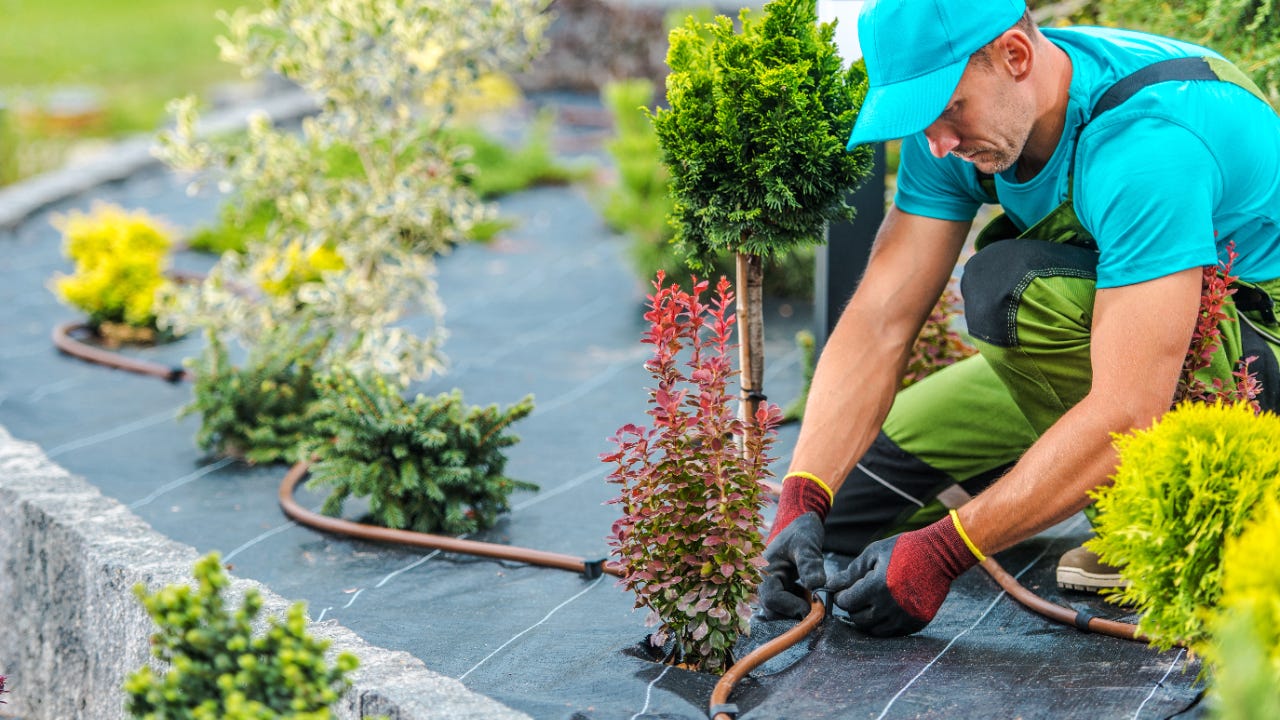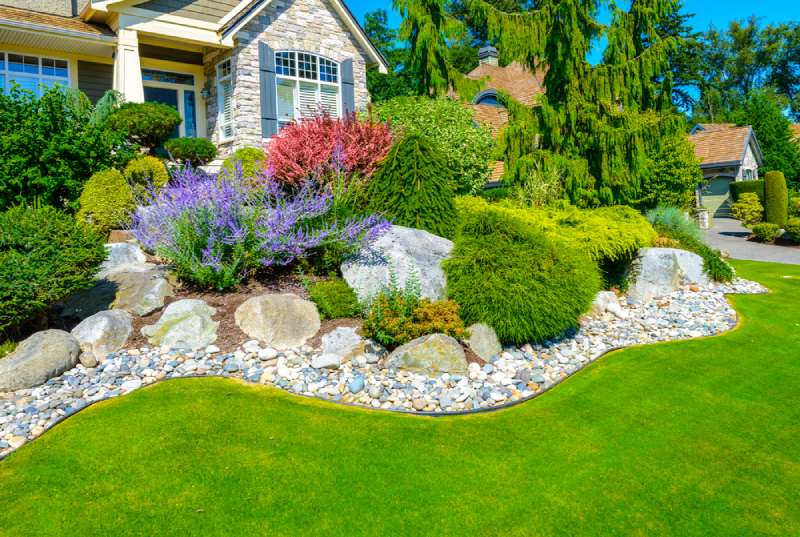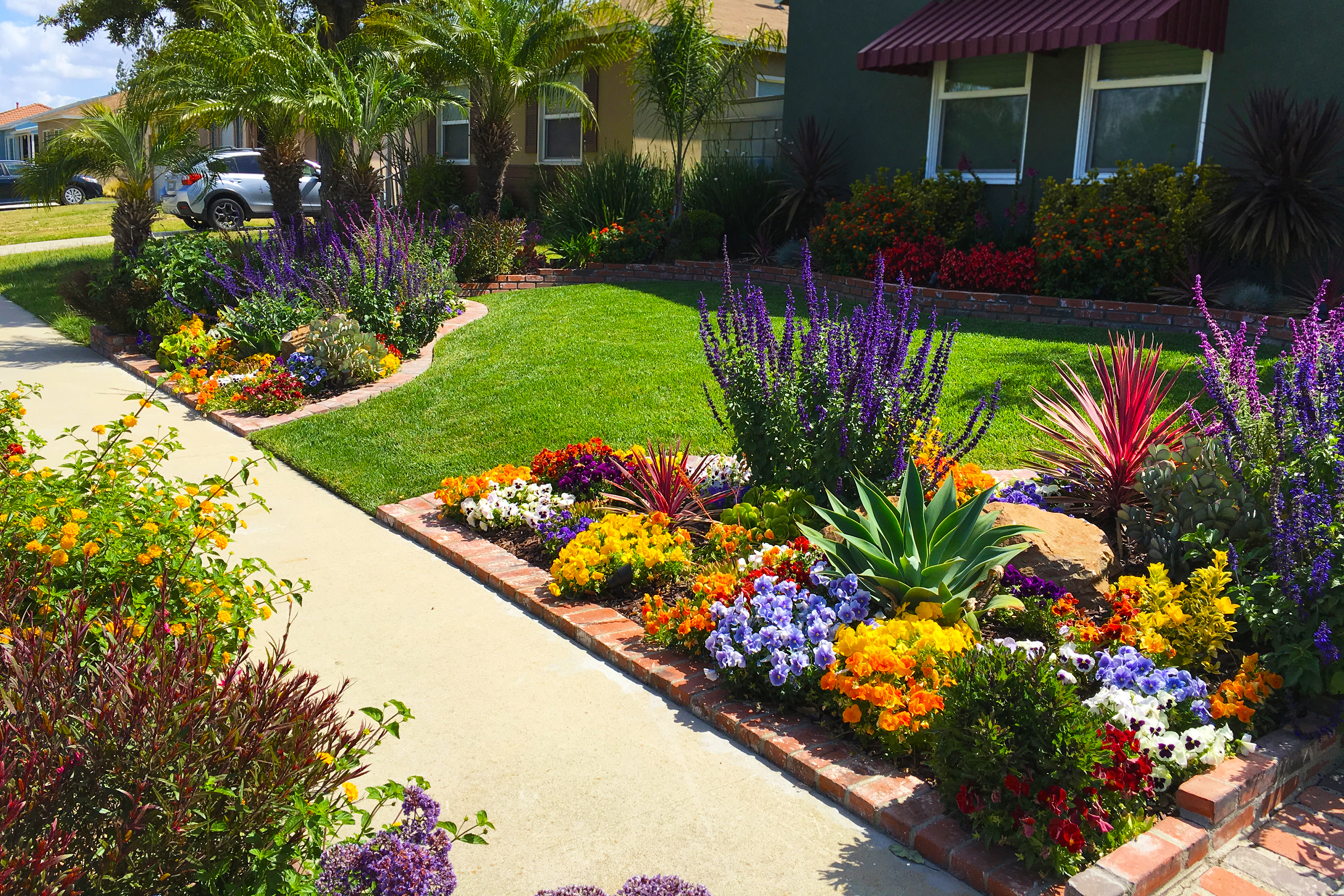Exactly How Palm Desert Landscaping Can Raise Your Home's Visual Allure
Exactly How Palm Desert Landscaping Can Raise Your Home's Visual Allure
Blog Article
A Comprehensive Overview to Creating and Implementing Effective Landscape Design Solutions
The art and science of landscape design extend past mere aesthetics; they include a thoughtful assimilation of style concepts, environmental stewardship, and functional implementation. What methods can one employ to make sure these landscapes not only thrive but likewise flourish in consistency with their environments?

Comprehending Landscape Design Concepts
One may wonder what fundamental aspects add to reliable landscape style. At its core, successful landscape layout depends upon numerous crucial principles that lead the setup and choice of elements within an area. These principles consist of unity, proportion, equilibrium, and rhythm, each offering to produce an unified outside setting.
Unity refers to the natural relationship amongst various elements, ensuring that they function with each other visually and functionally. Equilibrium can be achieved with unbalanced or symmetrical plans, allowing the landscape to feel secure and inviting. Proportion entails understanding the range of components in relation to each various other and the surrounding setting, promoting visual consistency and convenience.

Analyzing Your Outdoor Space
Before applying the principles of landscape style, a comprehensive evaluation of your exterior space is important. This preliminary analysis helps define the range of your landscape design task and guarantees that your style straightens with the unique attributes of your property. Begin by evaluating the measurements of your room, taking precise measurements to comprehend the readily available location for various elements such as paths, patio areas, and yards.
Next, observe the existing functions of your landscape, including topography, soil high quality, and drain patterns. These aspects substantially affect plant choice and placement. Furthermore, evaluate the sunlight exposure across various locations throughout the day, as this will certainly affect the sorts of plants that prosper in your garden.
Think about the microclimates produced by structures, trees, and various other barriers, as they can impact temperature and moisture levels. Take note of any existing plants or hardscape elements that you desire to remove or keep. This extensive analysis lays the groundwork for a knowledgeable and reliable landscape design remedy, making sure that your style is not just visually pleasing but sustainable and also useful for many years to find.
Lasting Landscape Design Techniques
These techniques not only promote eco-friendly equilibrium however likewise enhance the aesthetic and useful worth of a landscape. Carrying out efficient watering systems, such as drip watering, lessens water waste and makes sure that plants get ample dampness (Palm Desert Landscaping).

An additional effective method is the critical placement of trees and bushes to provide all-natural windbreaks and color, therefore reducing power prices (Palm Desert Landscaping). Rain gardens can be incorporated right into the landscape layout to take care of stormwater drainage effectively, filtering system toxins before they get in waterways
Selecting the Right Plant Kingdoms
Choosing the right plants for your landscape is important to attaining both visual appeal and environmental harmony. The process begins with resource an understanding of your local climate, soil problems, and the details microenvironments within your landscape. Examining factors such as sunlight direct exposure, moisture levels, and existing plants will assist you choose plants that grow in your special setting.
Take into consideration including indigenous plants, as they are well-adapted to neighborhood problems, call for less maintenance, and assistance regional wildlife. Furthermore, choosing a diverse range of species can boost biodiversity while lowering the threat of illness and pest break outs. It is vital to examine the growth behaviors, growing durations, and seasonal colors of potential plants to create a vibrant and cohesive landscape.
Moreover, think of the intended use the space; as an example, if the location will certainly experience high foot web traffic, go with resilient ground covers. By attentively picking plants that line up with both your environmental demands and aesthetic goals, you can develop a lasting landscape that not only boosts your residential or commercial property but additionally contributes positively to the bordering community.

Application and Upkeep Techniques
When the appropriate plants have been selected for your landscape, the emphasis changes to effective application and recurring upkeep techniques. Successful installment starts with proper site preparation, which consists important source of dirt screening to determine nutrient levels and pH, complied with by modifying the dirt as needed. Very carefully prepare plants according to their development habits and light demands, making sure ample spacing to advertise healthy and balanced growth.
Irrigation is an essential element of execution. Establish a watering routine that thinks about the certain requirements of each plant varieties, readjusting for seasonal adjustments. Making use of drip watering systems can boost water performance and lower drainage.
Upkeep approaches must be implemented to ensure the longevity and vitality of your landscape. Normal jobs consist of weeding, mulching, and trimming to manage growth and avoid disease. Fertilization should be conducted based upon dirt tests, offering the necessary nutrients without over-fertilizing.
Keeping track of for insects and diseases is essential; early discovery can stop considerable damage. Seasonal modifications to maintenance regimens, such as winterizing perennials and preparing for springtime growth, will make certain that your landscape stays aesthetically attractive and healthy and balanced year-round.
Verdict
Finally, reliable landscaping solutions need an extensive understanding of design concepts, meticulous analysis of outdoor rooms, and the application of sustainable strategies. The selection of ideal plant types plays a crucial duty in improving visual appeal and environmental strength - Palm Desert page Landscaping. Successful execution and ongoing upkeep better make sure the longevity and vitality of landscapes. By incorporating these elements, landscapes can be transformed right into stunning, useful environments that promote biodiversity and contribute positively to community wellness.
One could wonder what foundational elements contribute to efficient landscape style. At its core, successful landscape style pivots on a number of vital concepts that lead the setup and selection of elements within a space.Selecting the right plants for your landscape is essential to accomplishing both visual charm and environmental harmony. It is vital to examine the growth routines, flowering periods, and seasonal colors of potential plants to create a vibrant and natural landscape.
When the ideal plants have been chosen for your landscape, the focus changes to reliable execution and continuous maintenance techniques.
Report this page